Best beginner DJ mixers 2025: Affordable scratch, club and rotary mixers to get you started
Get to grips with the basics of mixing and scratching with these cheap and entry-level mixers
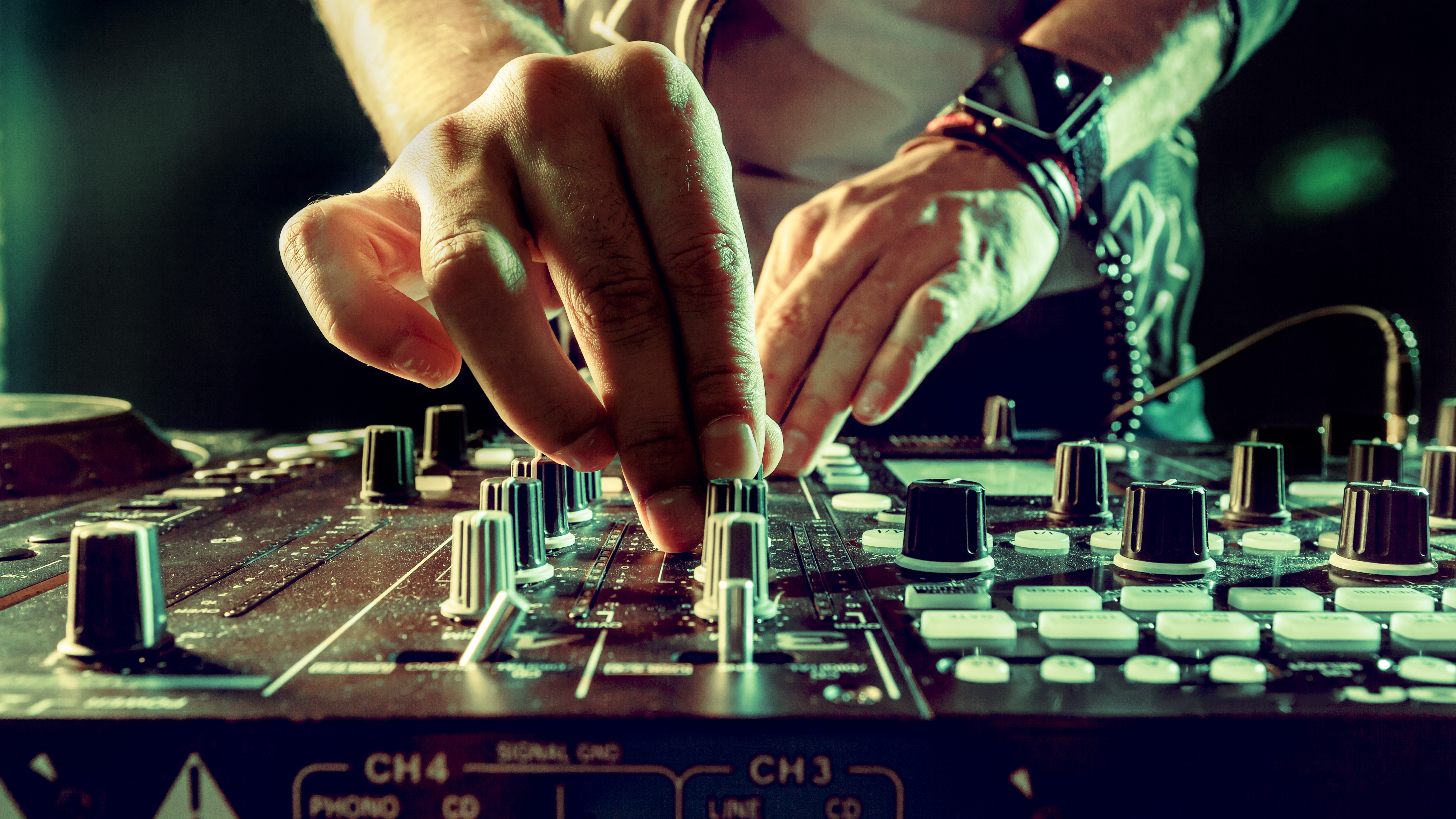
As DJ gear has evolved in ever more elaborate ways in recent decades, the amount of possible DJ set-ups on offer has grown exponentially. A DJ mixer is still an absolute staple of classic DJ rigs though, and for DJs just starting out, choosing the best beginner DJ mixer can be vitally important. Let’s unpick the whats and whys…
Let’s start with the real basics. What exactly is a DJ mixer? In its most basic form a mixer is a device that lets you blend sound from two or more sources into a single output. It’s an absolutely fundamental part of DJing. It’s the thing that allows you to mix tracks together or prepare – ‘cue up’ – your next track while the current one plays.
All DJ set-ups feature a mixer of some kind, although not always in the same form. If you’re a laptop DJ, you may use a virtual mixer built into your chosen software. Many all-in-one DJ devices and controllers – designed for use alongside a laptop – include a real-world mixer built into them.
What we’re focusing on here though are dedicated beginner mixers. These are standalone hardware devices that don’t play music themselves and – with one exception – don’t require a laptop to function, but offer two or more inputs allowing you to connect CDJs, vinyl turntables or any music player of your choice.
We've included some expert buying advice at the end of this guide, so if you'd like to read more about the best DJ mixers for beginners, click the link. If you'd rather get straight to the products, keep scrolling.
Best beginner DJ mixers: MusicRadar’s Choice
For all-round features and performance, our favourite entry-level mixer is the Pioneer DJM-250MK2. It’s certainly not the cheapest beginner mixer in this list, but it does offer the broadest range of features, and as your DJing skills improve and you become more adventurous, that flexibility will come into its own. The 250 allows users to connect CDJs or turntables, but also mix digitally using Pioneer’s excellent Rekordbox software – and even experiment with a digital vinyl set-up.
There are plenty of other quality options here though. If you’re sure digital isn’t your thing, the Xone:23 or Omnitronic rotary mixer are both quality analogue tools at reasonable prices.
However, if you simply want something cheap and cheerful, Numark’s M2 mixer is an absolutely bare-bones device that is cheap without being low quality.
Best beginner DJ mixers: Product guide
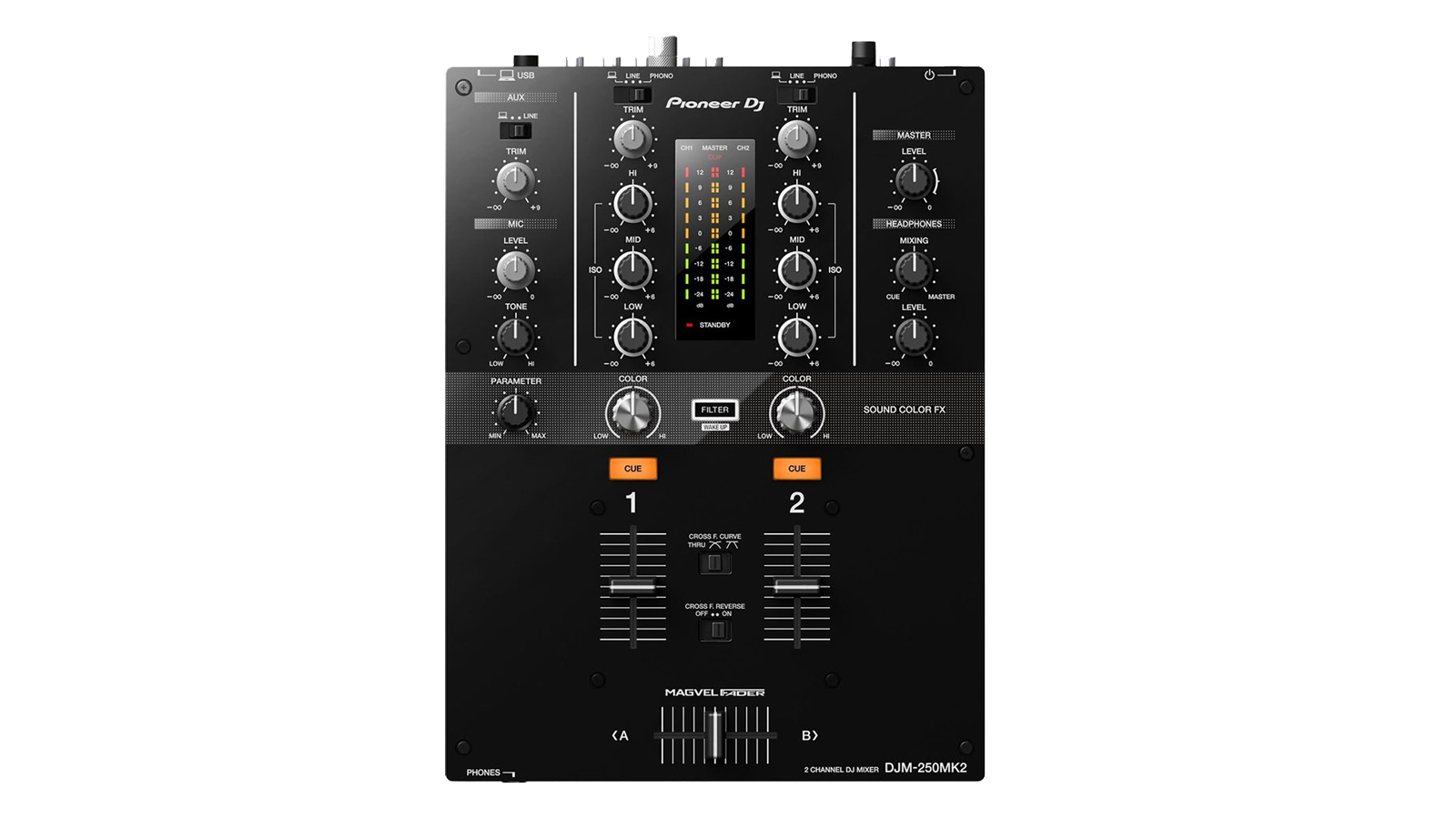
1. Pioneer DJ DJM-250MK2
Our expert review:
Specifications
Reasons to buy
Reasons to avoid
Pioneer’s dominance over DJ mixers isn’t quite as total as its ubiquity in the CDJ realm, but the Japanese brand’s DJM range is still a popular choice among pro and amateur DJs alike. The 250 is the entry point into that range.
This two-channel mixer is relatively bare-bones compared to higher-end DJMs, but still has some neat tricks up its sleeve that put it above many other entry level devices. One such feature is the built-in audio interface, meaning you can hook this mixer up to physical players such as CDJs or turntables, a DJ laptop-based set-up, or some combination of the two.
In fact, the DJM-250Mk2 is even compatible with digital vinyl systems (DVS) which allow users to control digital tracks within a laptop using special timecode vinyl records or CDs. A nice touch for a piece of entry-level gear. The onboard interface also makes it easy to record your DJ mixes into a computer.
While there’s no effect capabilities to speak of, both channels offer three-band EQs and a dedicated filter, which are flexible enough to achieve smooth, pro-sounding mixes. There’s a dedicated mic channel too. In all, this is a very well-rounded package for budding DJs.
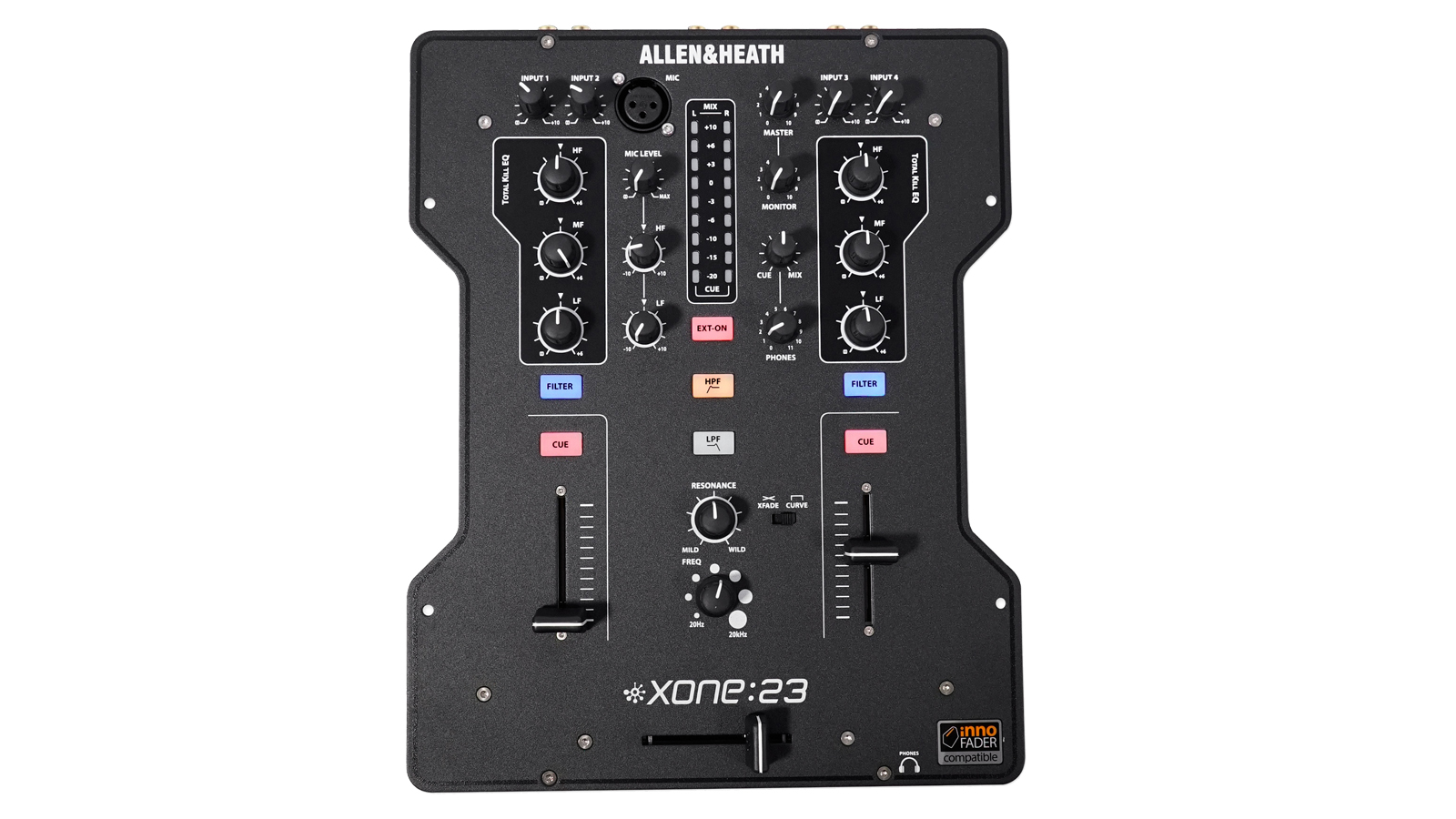
2. Allen & Heath Xone:23
Our expert review:
Specifications
Reasons to buy
Reasons to avoid
Along with Pioneer’s DJM range, Xone DJ mixers from British brand Allen & Heath are some of the most popular tools among club DJs. The 23 is the cheapest and simplest in the range, but it’s still a quality mixer with some nice features for a device at this price point.
What we like about the 23 compared to some of the other two-channel analogue mixers in this round-up is its scope for expandability. Yes, there are only two mixer channels available here, but each comes with dual rear-panel inputs (one line/one phono) and a convenient front-panel switch, meaning you could, for example, attach both turntable and CDJ and switch between the two. Similarly, while there’s no onboard effects, the Xone:23 includes an external effects loop, allowing you to add pedals or a multi-effect unit to introduce new mixing techniques.
It’s not the cheapest two-channel mixer in this line-up – and it lacks any digital compatibility – but this is a robust device with the scope to grow with you as your mixing skills evolve.
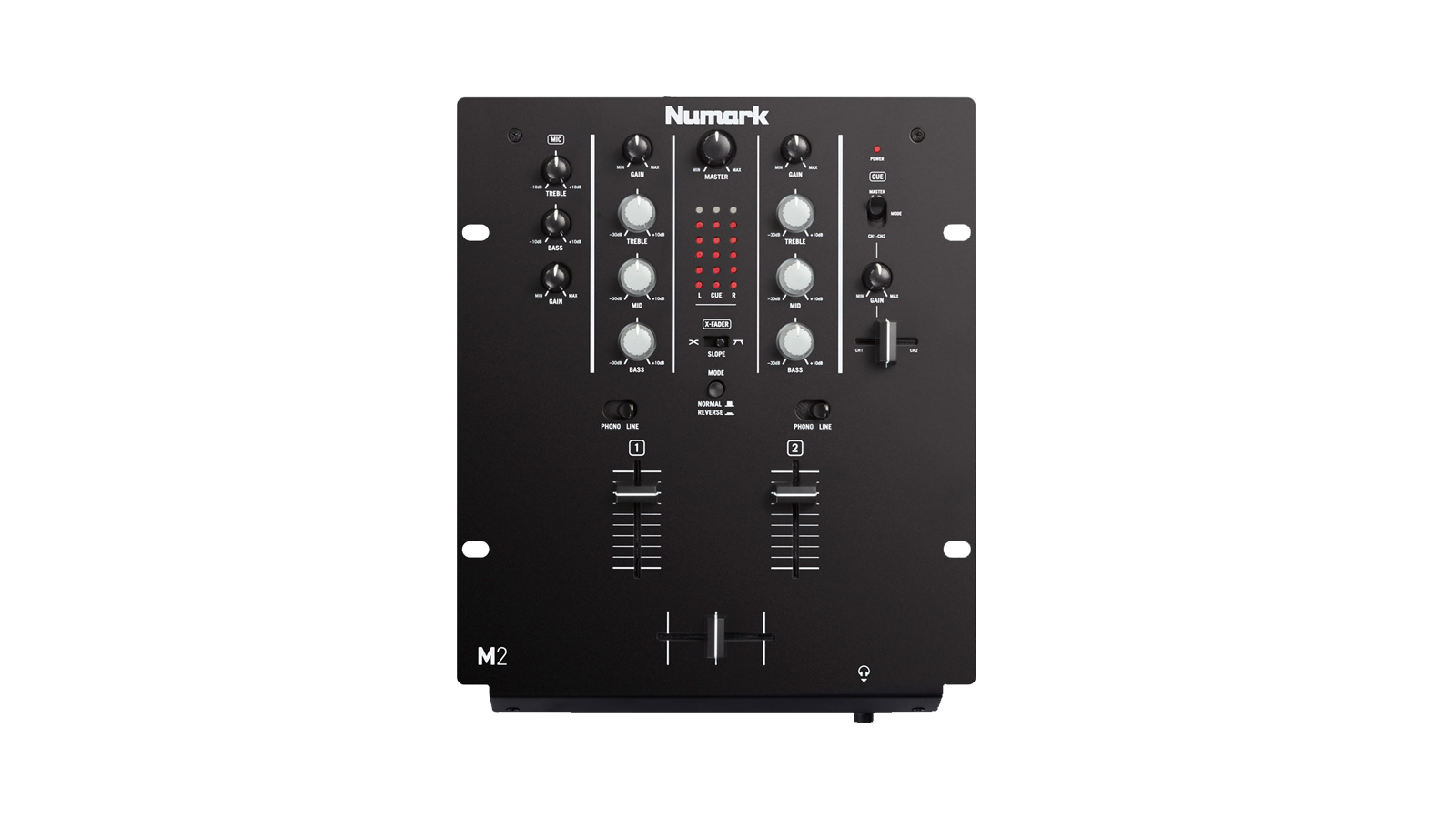
3. Numark M2
Our expert review:
Specifications
Reasons to buy
Reasons to avoid
While Numark also make some impressive mid- and pro-level DJ gear, they’ve long been a favourite at the entry-level end of the market.
The M2 is about as basic as DJ mixers get. There are two channels here, each switchable between line and phono inputs for CDJ or turntable connections. Each channel has a fader, a separate gain knob, three band EQ and there’s a crossfader for blending/cutting between the two. There’s also a mic channel with its own EQ and gain and a headphone output with crossfader-controlled cueing.
The M2 has all you need to learn the basics of mixing or scratching, and makes a solid choice for a first set-up. Its main drawback is lack of expandability when you want to take things further. There are no effects or any way to incorporate external ones, plus no digital compatibility that might let you get more creative as your skills progress.
The EQs and gain controls lack the subtlety and responsiveness of higher-end mixers too, although on the whole build quality is rugged and plenty durable.
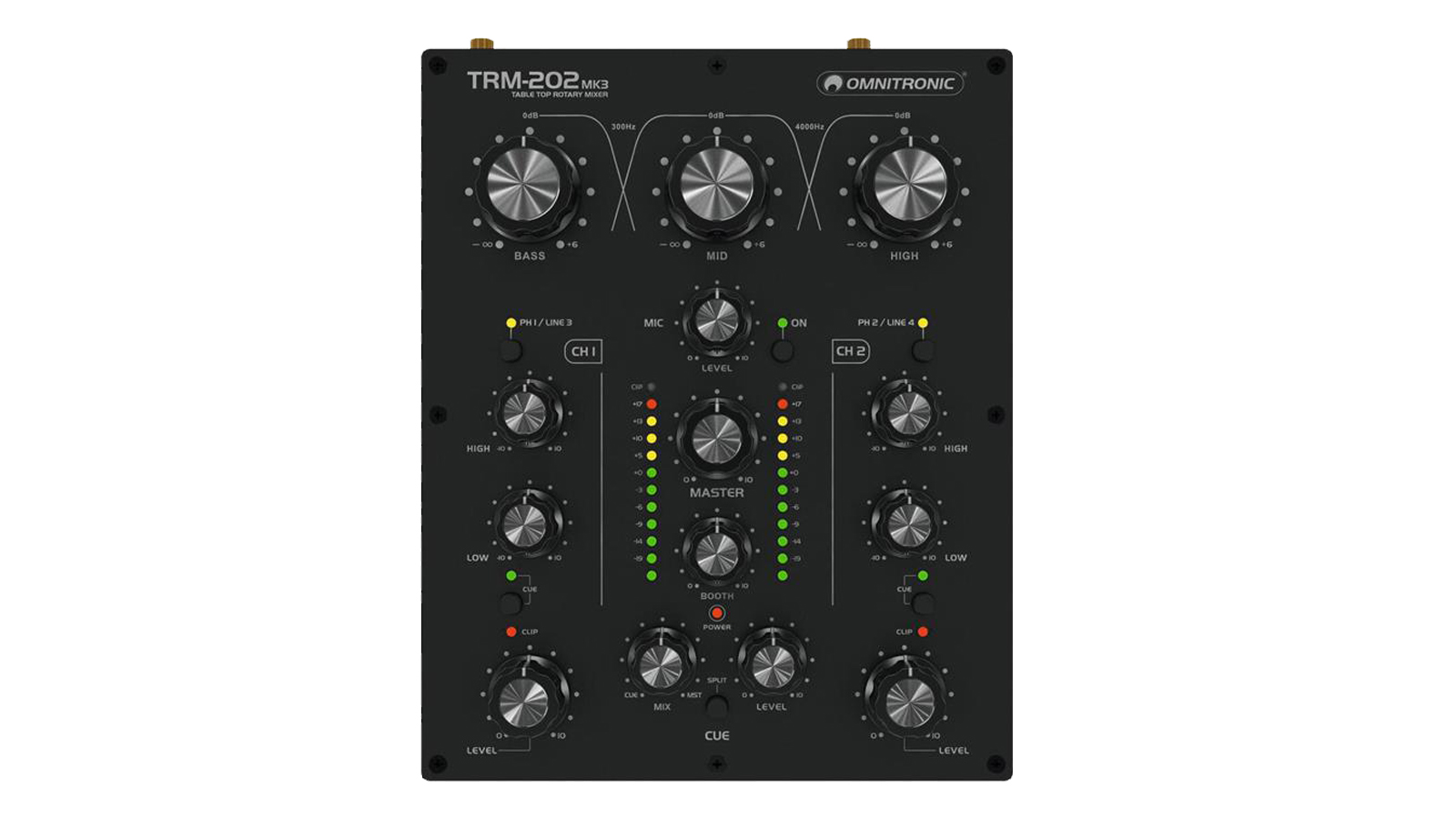
4. Omnitronic TRM-202 MK3
Our expert review:
Specifications
Reasons to buy
Reasons to avoid
Rotary mixers have something of a cult following among a certain subset of DJs. This is a style of mixer that trades the common faders found on most mixers for round knobs, or rotaries. New York DJ icon Larry Levan was a notable user of classic rotaries, and although it could be argued that they are a relic of a bygone age, a significant number of club DJs still love them.
Rotaries are also commonly associated with high-end, audiophile gear that comes at a hefty price. The TRM-202, from Omnitronic, is notable for being an undeniably classy-looking rotary mixer at an affordable price point.
There’s little in the way of bells and whistles here – for the most part the TRM-202 is a simple 2-channel mixer. The key feature is the chunky, tactile three-knob isolator EQ that sits along the top of the unit. This is joined by high and low EQs for each channel, which combine to offer plenty of sound shaping.
Rotary mixers aren’t for everyone – their design suits long and slow blends best for house and techno – but for the price, the build and sound quality is impressive here.
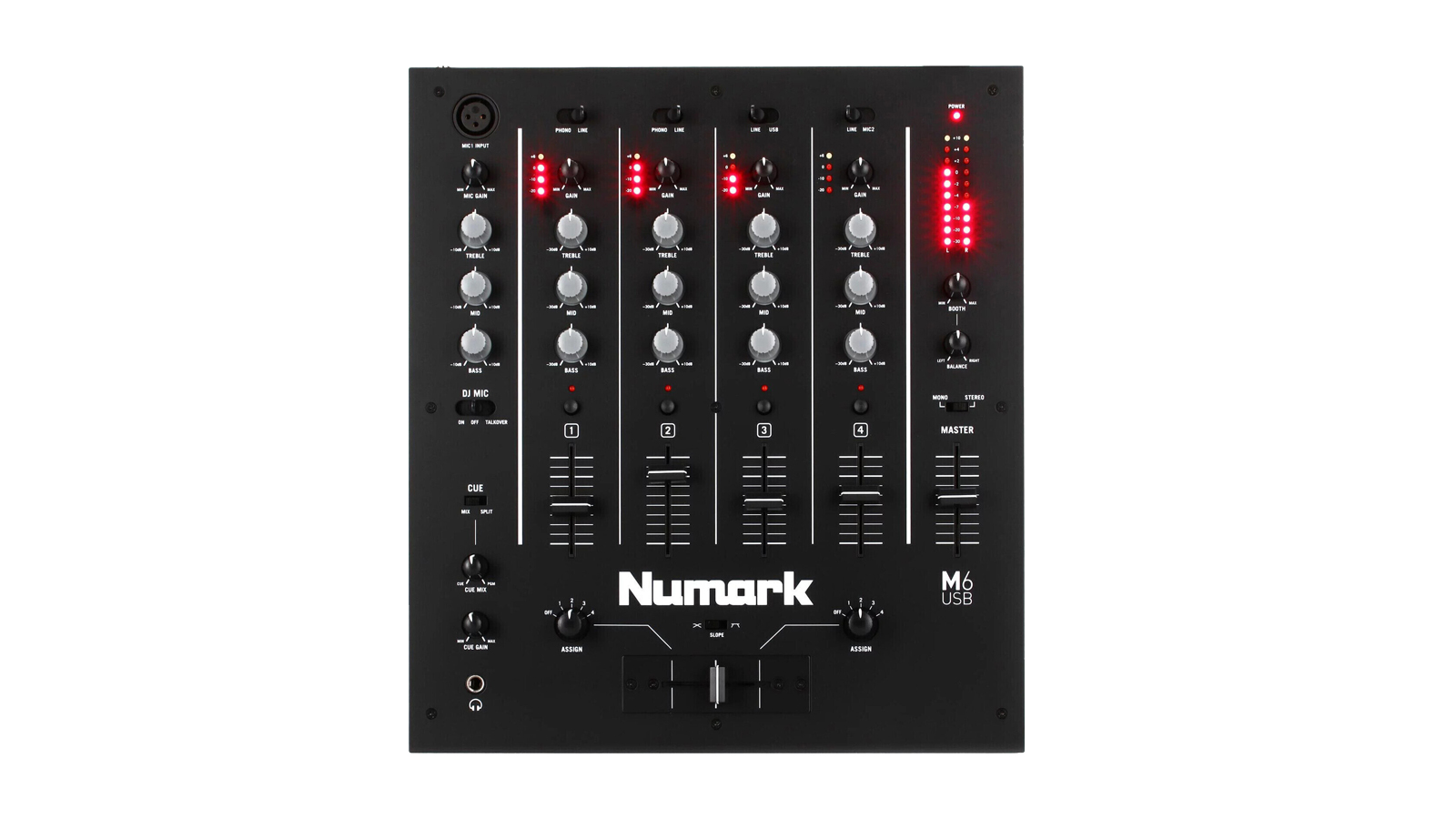
5. Numark M6 USB
Our expert review:
Specifications
Reasons to buy
Reasons to avoid
Much like the M2 above, Numark’s M6 USB is a simple, no-frills beginner DJ mixer offering the tools you need to get going at a bargain price. However, whereas the M2 has just a pair of inputs with little expandability, the M6 is more flexible right out of the box.
The main selling point here, compared to the majority of other mixers at this price, is the inclusion of four fully-fledged mixer channels, each with its own fader and three-band EQ. That’s on top of an independent mic channel too.
As the name suggests, there’s some USB compatibility here too. The M6 features a built-in audio interface, meaning it can stream audio to or from a computer. However, don’t expect full multi-track streaming from Serato or Traktor – this is a single channel affair, meaning you can stream audio to just one hardware mixer channel (fixed to channel 3) or send the master into your computer for recording.
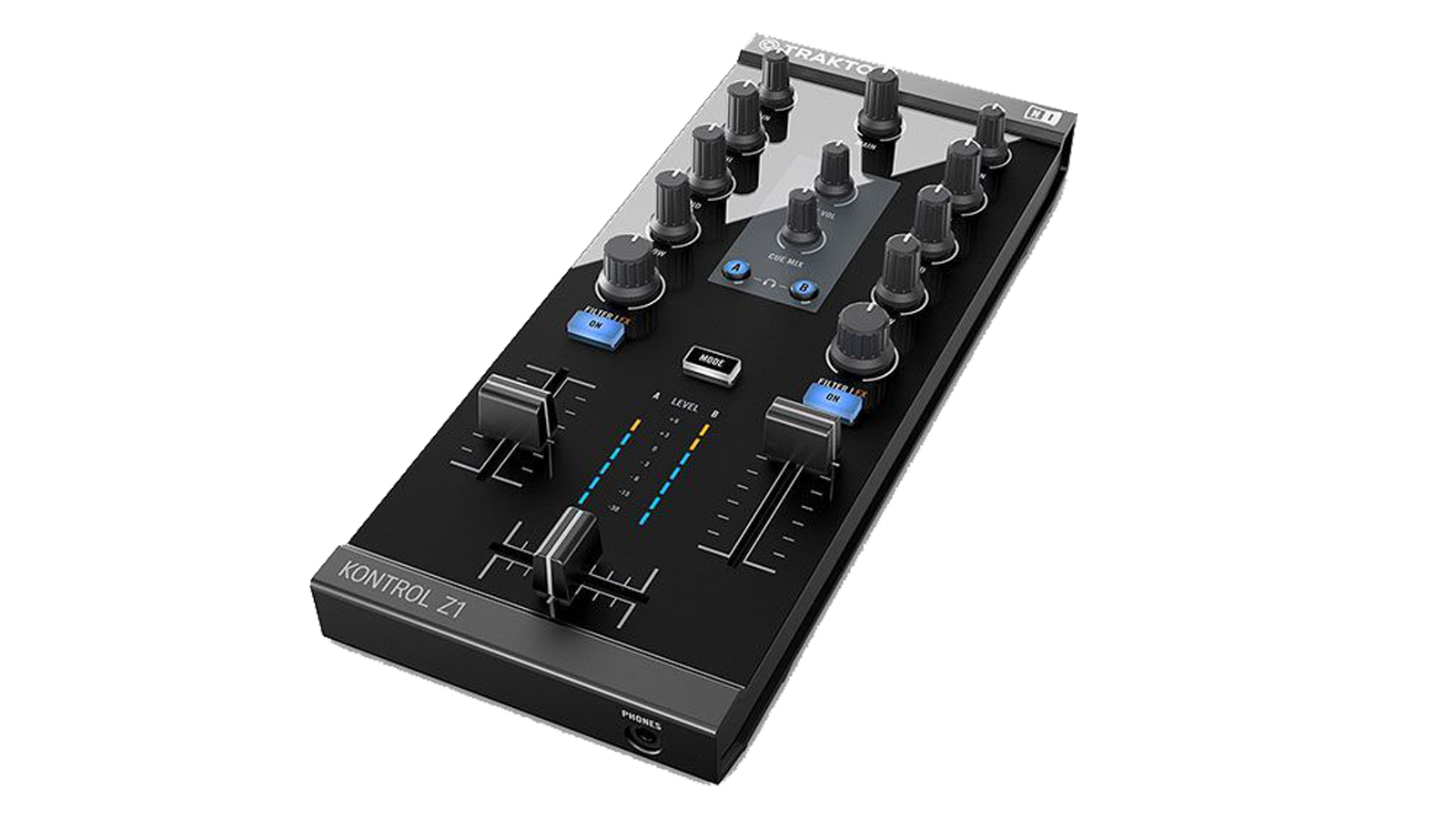
6. Native Instruments Traktor Kontrol Z1
Our expert review:
Specifications
Reasons to buy
Reasons to avoid
NI’s Z1 is a little different to the majority of mixers in this round-up, in that it offers no physical inputs. Instead, this device is designed for controlling the virtual mixer inside the laptop version of the company’s mixing software Traktor.
However, while the mixer channels, EQs and filters being adjusted are those within a virtual mixer, the Z1 also features an audio interface with separate master and headphone outputs. This means that it can be used to blend, cue and monitor tracks like any other DJ mixer.
The Z1 doesn’t come with a licence for the full version of Traktor 3, but the free Traktor DJ 2 – available for desktop or iOS – is enough to get you started. The Z1 does come with a cut-down version called Traktor 3 LE, plus a voucher to save on upgrading to the full version.
It’s worth noting that the Z1 was originally pitched as working for both desktop and iOS, but NI appears to have quietly dropped any mention of iPhone or iPad use from its website. We’ve tested the Z1 with an iPad in the past and it worked great, but it’s unclear whether it’s still compatible with all models or the latest mobile operating systems.
Read the full Native Instruments Kontrol Z1 review
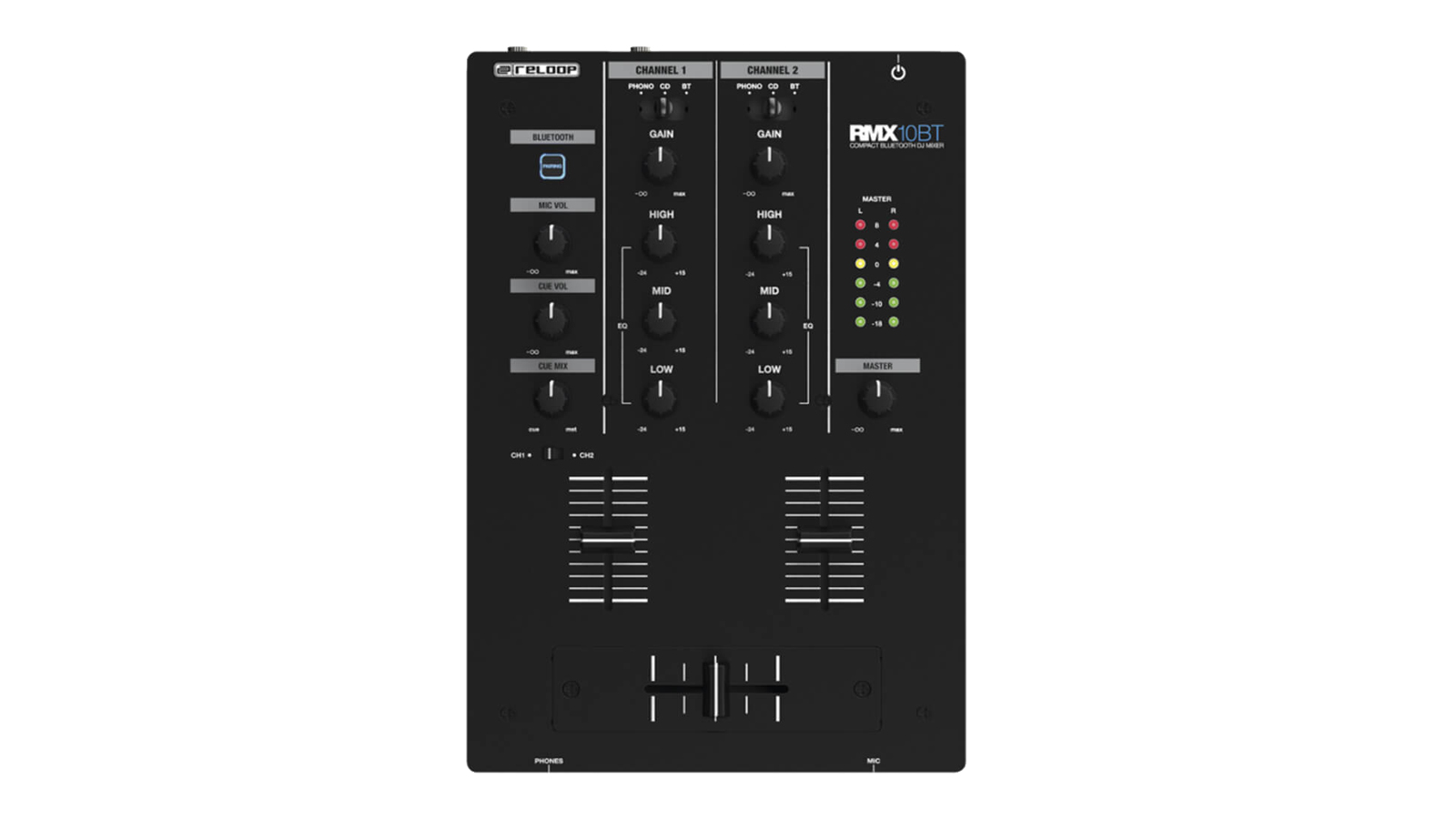
7. Reloop RMX-10 BT
Our expert review:
Specifications
Reasons to buy
Reasons to avoid
For the most part, Reloop’s RMX-10 is another no-nonsense entry-level mixer. Specs are, for the most part, pretty standard: there are two mixer channels with three-band EQ and gain, a crossfader and separate mic channel with EQ.
Where the RMX-10 BT sets itself apart is with the inclusion of Bluetooth, meaning it’s possible to use a device such as a phone or tablet as a streaming input to either one of the channels. Each also has both line and phono inputs on the back for CDJs or turntables.
As a result, the RMX-10 BT is a good choice for beginner or home users that want to blur the lines between DJing and a home listening set-up. Being small and lightweight, it’s a handy choice for house parties too.
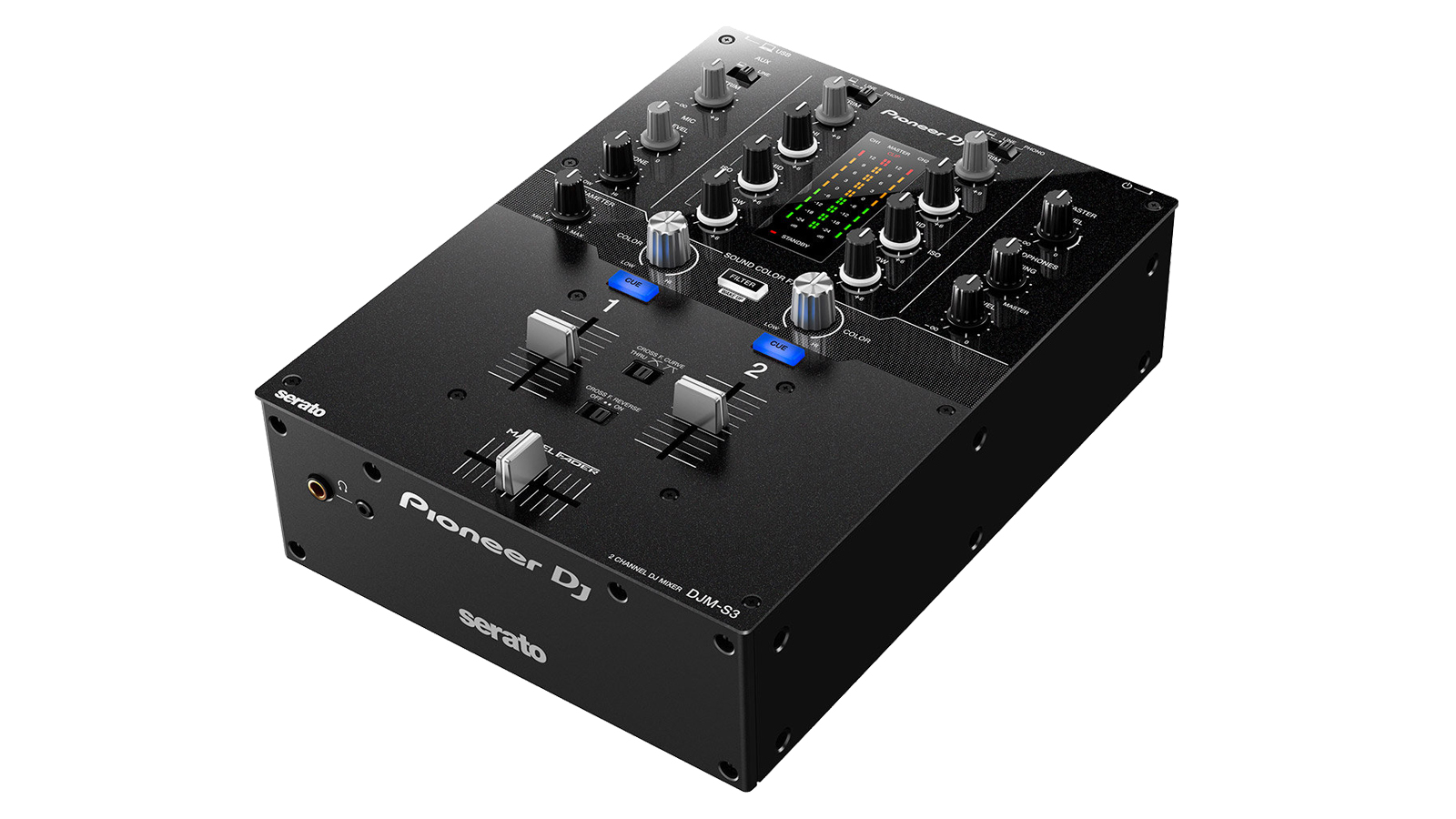
8. Pioneer DJM-S3
Our expert review:
Specifications
Reasons to buy
Reasons to avoid
For digital turntablists and those that want to hook a real-world set of vinyl desks up to a virtual mixing system, Serato DJ Pro remains an immensely popular choice. Unfortunately, the entry price for these sorts of set-up is fairly high (even before you’ve factored in the cost of a set of turntables).
While there are cheaper Serato-ready devices out there, the DJM-S3 is our choice for a base-level Serato mixer. This is a fairly straightforward 2-channel scratch style mixer, with the usual faders and EQs. Like the DJM-250 (above) it also features Pioneer’s Sound Color filters too.
The S3 is rugged, with a sturdy replaceable crossfader. It’s digital vinyl-ready and also comes with a full Serato Pro licence.
In terms of capabilities, its biggest omission is the lack of any sort of performance pads for triggering samples or slicing cue points – a common addition to higher-end digital scratch mixers. This can be easily overcome by adding an additional controller though, such as Pioneer’s own DDJ-SP1, for example.
Best beginner DJ mixers: Buying advice
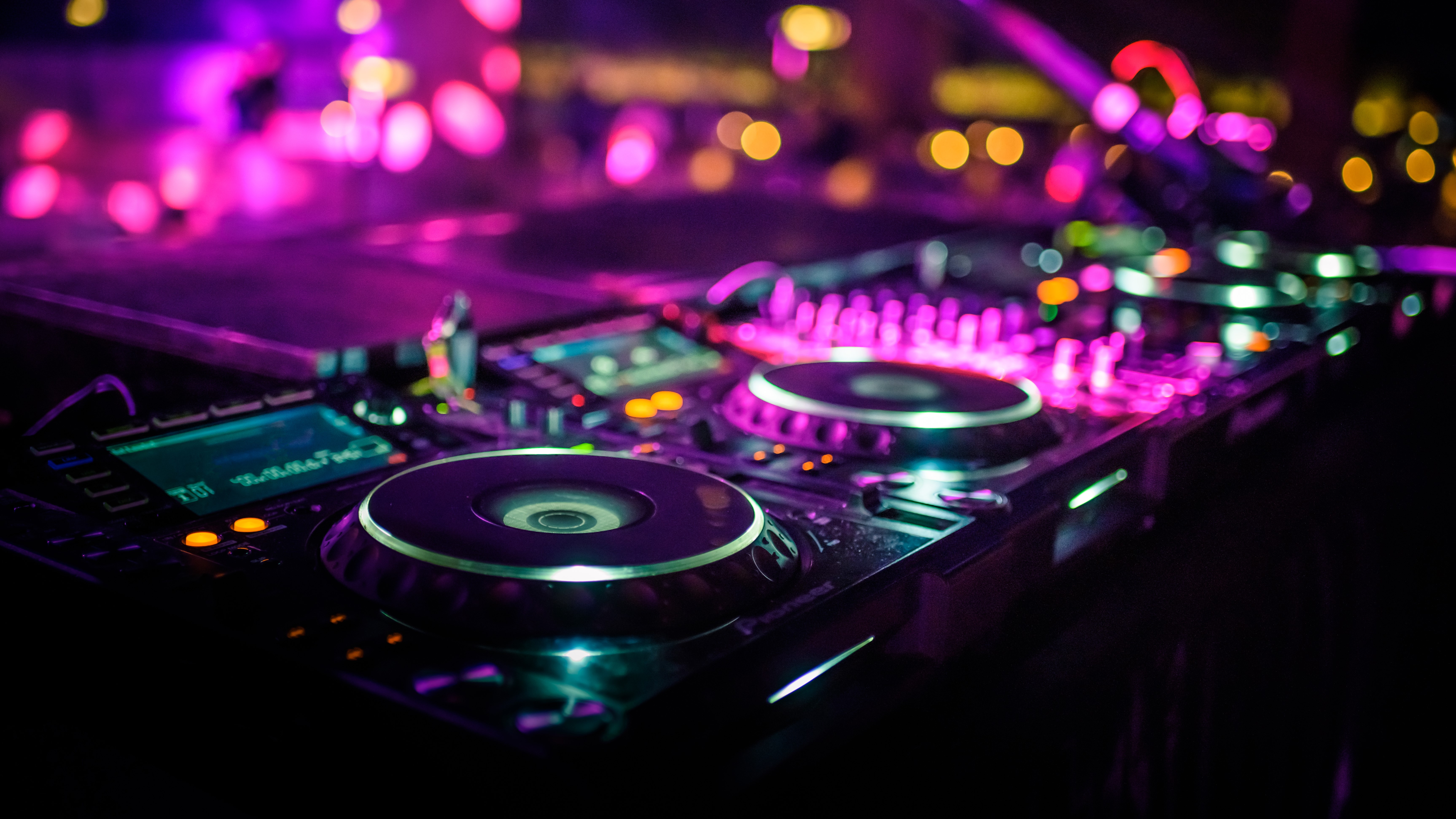
Inputs and outputs: what do you need?
MusicRadar's got your back
The biggest consideration when selecting a beginner mixer is to establish what you plan on connecting it to. If, in classic DJ fashion, you plan on your mixer being a bridge between a set of CDJs and/or turntables and a master output, then you’ll need at least two physical inputs (or more, if you plan to attach more than two playing devices). These inputs will be described as either ‘phono’ or ‘line’. The difference here is the level of signal they accept – phono inputs are for lower level turntable connections, which will need to be amplified within the mixer. Line level inputs are louder signals from CDJs, or wired connections from a phone, tablet or laptop. Most mixers with physical inputs will have both phono and line inputs.
Many mixers also include a mic input. While this isn’t strictly necessary for basic DJing, if you just plan to play music it does allow you or someone else to host, MC, toast, etc.
On the output front, the minimum most mixers will provide is a master output and a separate DJ headphone output. This is important as it allows you to monitor or ‘cue up’ tracks independently from what’s being played over the master output. Mixers may also provide additional booth or record outputs. These are extra connections allowing you to either connect an extra pair of monitors to help you mix in a club (booth) or capture your mixes with a recording device (record).
If you plan to incorporate a laptop and digital mixing software such as Traktor, Serato, rekordbox or Virtual DJ, you’ll need some kind of digital connectivity. Bear in mind, if you plan on using a purely digital set-up with no CDJs or turntables, a self-contained DJ controller with built-in mixer may be a better option than a standalone mixer.
In general though, the simple rule is that the more inputs and outputs a device has, the more flexibility it will have further down the line.
What is a ‘scratch’ mixer?
When researching DJ mixers, you’re likely to quickly come across devices labelled as scratch or battle mixers. Generally speaking, these are mixers aimed at turntablists and hip-hop DJs rather than club, house or techno DJs. That’s because scratch mixers put more emphasis on the tools needed for scratching, including quality crossfaders, and forego club-friendly features such as additional mixer channels, filters or effects.
However, at the entry level end of the market, this can sometimes be a bit of a red herring. Cheap mixers are often described as ‘scratch mixers’ by their creators when in reality this is more in reference to the minimal set of features they offer than any real leaning toward turntablism. In reality, a basic 2-channel mixer is a perfectly acceptable entry point to learn essential DJ skills, whether you plan to create long and slow club mixes or develop your scratching skills.
How we test beginner DJ mixers
Our guide is based on our experience of hands-on use with the mixers listed, as well as wider, long-term knowledge of using gear from the various DJ brands we’ve covered here.
Our criteria for selecting the best beginner mixers is based on a multitude of factors. The devices here aren’t necessarily the outright ‘best’ mixers on the market – you’ll need to pay higher, pro-level prices for those. However, these are the mixers that have impressed us by balancing a certain amount of flexibility, reliable build quality and beginner-friendly accessibility, all within a price point that we don’t think is an unreasonable expenditure for those taking their first steps in the world of DJing.
We’ve aimed to bring you a cross section of different mixer styles that should suit a variety of use cases and set-ups. While the ultimate choice will come down to your personal needs and ambitions as a DJ, each mixer here should serve you well until you’re ready to step up to a more advanced set-up.
Find out more about how we test music gear and services at MusicRadar.
Related buying guides
- Take a look at the best samplers
- Check out the best drum machines
- Enjoy the best DJ apps and software
- And the best beginner DJ controllers
- Get yourself heard with the best DJ speakers
- Essential DJ accessories for the studio to the booth
Get the MusicRadar Newsletter
Want all the hottest music and gear news, reviews, deals, features and more, direct to your inbox? Sign up here.
I'm the Managing Editor of Music Technology at MusicRadar and former Editor-in-Chief of Future Music, Computer Music and Electronic Musician. I've been messing around with music tech in various forms for over two decades. I've also spent the last 10 years forgetting how to play guitar. Find me in the chillout room at raves complaining that it's past my bedtime.
NAMM 2025: Make a pro-quality mix anywhere with Mackie’s new battery-powered ProFX10 GO
"This is a game-changer for us. I mean, that's a pretty essential piece of gear": Andertons just slashed £249 off the Behringer X32 mixer, which has Foo Fighter Chris Shiflett's stamp of approval